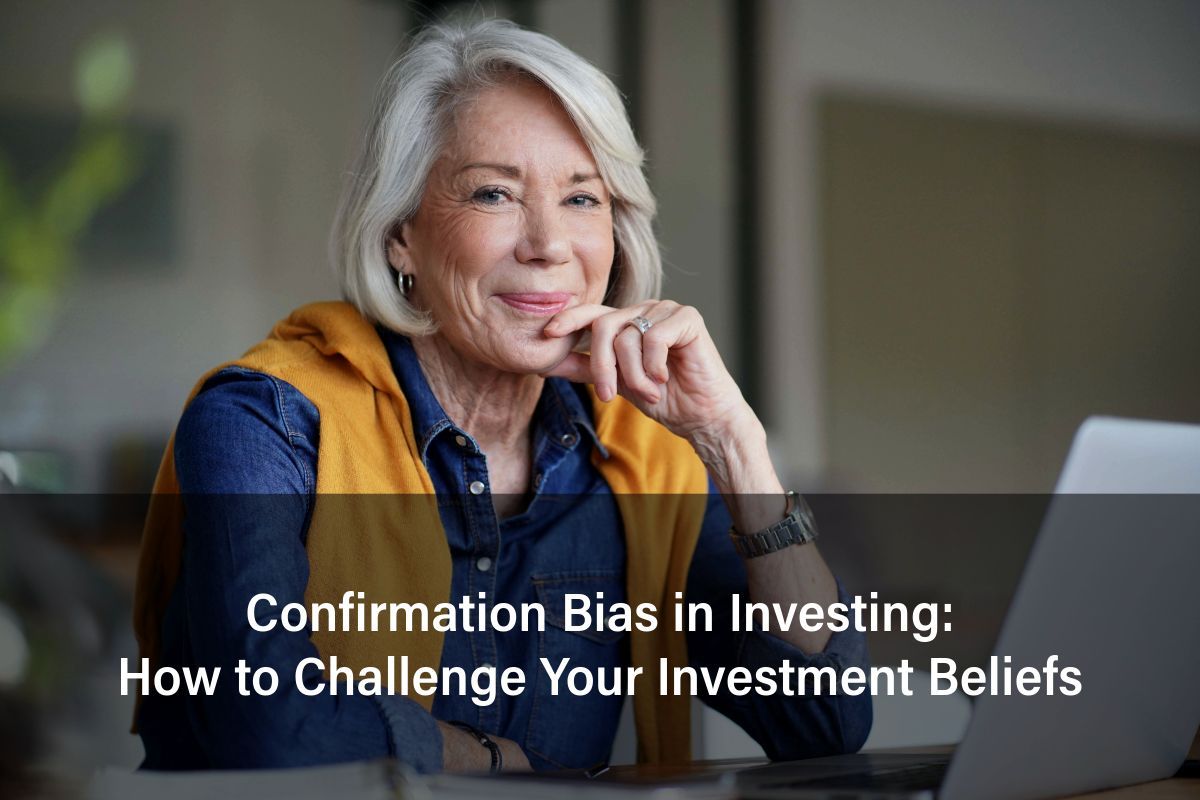Confirmation Bias in Investing: How to Challenge Your Investment Beliefs

In the intricate world of investing, cognitive biases have the power to significantly skew decision-making processes, often leading to less-than-optimal outcomes. One such pervasive psychological trap is confirmation bias, which can happen even when you’re not aware that you’re falling into it. This article explores the concept of confirmation bias in investing, illustrating its impact on investors and offering practical advice for challenging entrenched investment beliefs. By fostering awareness and promoting a critical mindset, investors can enhance their decision-making skills, ultimately leading to more informed and balanced investment choices.
Understanding Confirmation Bias in Investing
Confirmation bias occurs when individuals favor information that confirms their preexisting beliefs or hypotheses, disregarding evidence that contradicts them. In the context of investing, this bias can lead to selective information processing where investors may only acknowledge market signals that support their current investment strategies while ignoring pertinent warnings or alternative viewpoints. This cognitive shortcut can be particularly dangerous in investing as it may cause overconfidence in one’s financial decisions, potentially leading to increased risk of losses.
For example, an investor might overemphasize a single positive analyst report on a struggling stock they own, ignoring broader market sentiment or more critical analyses indicating a sell-off. Such selective information processing can result in holding onto underperforming assets too long or missing out on more lucrative opportunities elsewhere.
The Consequences of Confirmation Bias
The consequences of confirmation bias in investing are multifaceted, often leading to significant portfolio imbalances. This bias prompts investors to overweight certain sectors or stocks without sufficient justification, simply because these choices reaffirm their existing beliefs. This lack of diversification can expose the portfolio to undue risk if favored sectors underperform. Additionally, confirmation bias may cause investors to miss out on potential opportunities because they ignore investments that do not align with their current strategies, thus limiting potential gains from other profitable sectors or emerging market trends.
SEE ALSO: Investor Tips: 9 Strategies That May Strengthen Your Investment Portfolio
Increased risk exposure is another unfortunate outcome of confirmation bias, as investors might disregard warning signs that suggest a need to reduce exposure to declining assets. This often results in holding onto losing positions too long or missing out on signals to capture profits before a downturn. Moreover, confirmation bias can exacerbate market volatility when clusters of investors, reacting en masse to confirming information, ignore contrarian data. This collective behavior can lead to exaggerated market movements, further complicating the investment landscape.
By acknowledging and addressing these issues, you’ll be able to better safeguard your portfolio as an investor against the pitfalls of confirmation bias.
Strategies to Mitigate Confirmation Bias
- Seek Diverse Perspectives: Actively look for information from a variety of sources and consider viewpoints that challenge your investment stance. Engaging with a wide range of financial news, analyst reports, and market commentary can help provide a more balanced view of investment opportunities.
- Encourage Contrarian Thinking: Regularly test your investment theses by considering the opposite position. Ask yourself, “What would need to be true for my current investment decision to be wrong?” This approach can help you uncover blind spots in your thinking.
- Establish a Formal Review Process: Set up regular intervals to review your investment portfolio objectively. Try to use this as an opportunity to critically assess the validity of your investment decisions against current market conditions and adjust your strategies accordingly.
- Consult with Professionals: Financial advisors can provide an impartial viewpoint that mitigates the risk of confirmation bias because they possess the expertise to evaluate investments more objectively and can offer insights that challenge personal biases.
- Adopt a Long-Term Perspective: Focusing on long-term investment goals rather than short-term fluctuations can help reduce the temptation to chase confirmatory evidence for recent decisions.
SEE ALSO: Is a Roth Conversion Right for You?
Final Thoughts
Confirmation bias in investing can significantly impede your ability to make balanced and informed investment decisions. By recognizing and actively mitigating this bias, you have a better chance at enhancing your investment strategy and better aligning it with your financial goals. If you’re seeking to refine your investment approach and desire guidance free from confirmation bias, consider consulting with a professional from Paces Ferry Wealth Management. Our team is dedicated to providing tailored investment advice that helps you see beyond your biases and make decisions that are truly in your best interest. For more information or to schedule a consultation, contact us today.